WE 302 Field Trial SetsMetal or Bakelite??©2002-16
paulf. All rights reserved.
|
|
|
|
|
RELATED
PAGES ON THIS SITE: DEVELOPMENT
OVERVIEW TOUCH TONE
DEVELOPMENT TIMELINES
WE 300-SERIES WE 500-SERIES WE 1500-SERIES WE 2500-SERIES WE AUTOVON SETS |
| D-95647 Photos taken of Roy Basci's displays at the 2001 and 2002 TCI Labor Day Shows See the December 2011 issue of TCI's Singing Wires for more details and detailed photos. |
|
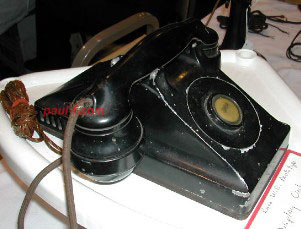 |
Dated 1932 ( IV 32). This early model is a lot longer and somewhat narrower than the production model. The vents for the ringer are way at the back. Both handset and line cords exit on the left side, about 3/4 of the way back. The handset contains the early "bullet" transmitter, as the capsule F1 transmitter wasn't developed until 1934. |
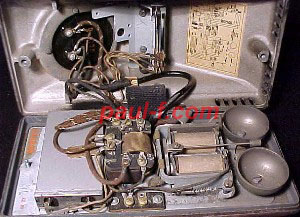 |
The capacitor (D95648)
is toward the front of the phone (left in photo), then a
101A inductor and the ringer, with gongs at the back
edge. The ringer is an A1A. The switchhook is a simple DPST design (double pole, single throw). Note the wide fabric hinge used to protect the wiring between the base and housing. |
| D-97464
Bakelite Photos taken of Paul Vaverchak's display at the November 2002 Enfield Phone Show. Also see TCI's Singing Wires, December 2001 issue. The set was later owned by John Fehl, who wrote interesting articles with detailed photos published in TCI's Singing Wires in the June 2012 and December 2015 issues. |
|
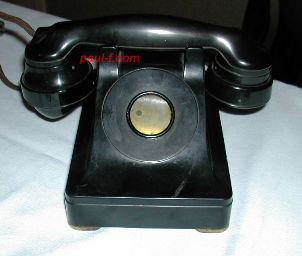 |
At first glance, it looks like any other early 302
with E1 handset. |
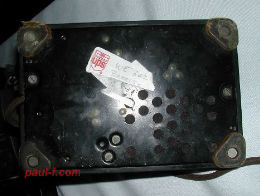 |
The bottom plate is metal, and obviously different
from the later production sets. The feet are of similar shape, but thinner than the production feet and are riveted in place. |
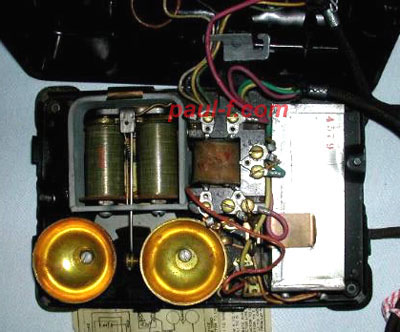
|
The footprint was reduced by turning the ringer 90
degrees, designing a smaller capacitor and
tightning up the component placement. Moving the
ringer to the front of the set allows one gong to
overlap the 101A induction coil. Notice that there are several interesting tabs along
the edges of the bottom plate. They fit into
matching slots in the housing to assure proper
alignment. |
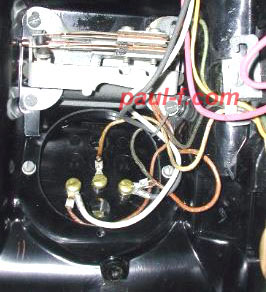 |
The apparatus blank in
this manual model is also bakelite -- no insulated
terminal strip needed, as on the later metal blank shown
below. |
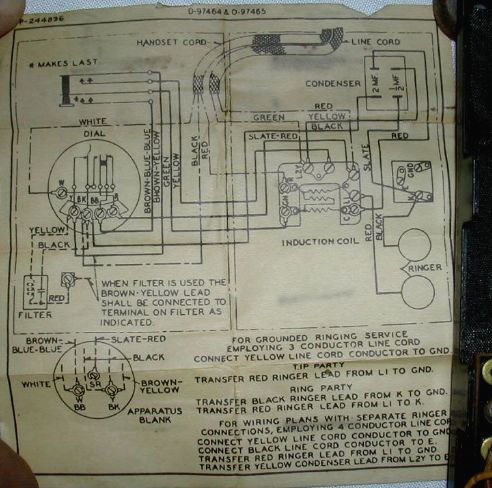 |
|
|
Most found D-97464s have a cast metal housing. The base plate and internal components appear identical to the bakelite set above. Metal sets were made in both the first and second quarters of 1936 - marked I 36 and II 36. A handset that looked a lot like the F1 production handset was used on some of the later sets. The transmitter cap was made in 2 pieces, with a screen similar to that on the E handsets held in place with a bakelite ring. |
|
| D-97464
Metal - E
Handset (Photos from Frank Ruffino and past auctions) |
|
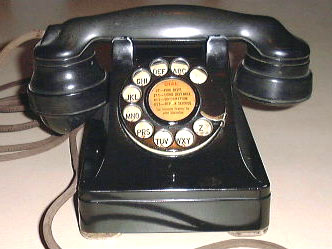 |
D-97464 I 36 |
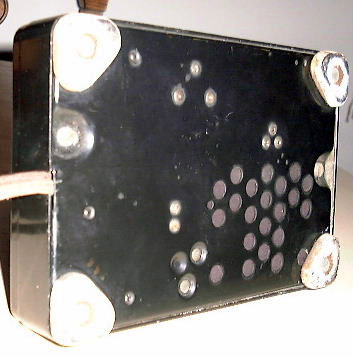 |
Bottom View. Note that both cords come out the back thru one cutout. Both cords came out the left side on the D-95647, above. The production 302's handset cord exited out the left while the line cord went out the back. (Add your own joke punch line here.) |
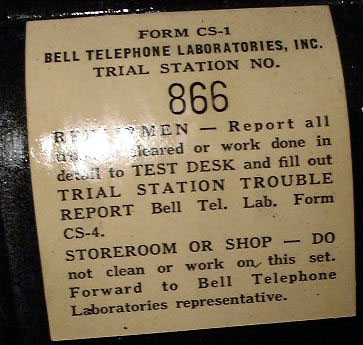 |
Field Trial Station Number
and Instructions. |
| D-97464
Metal -
F-style Handset (Photos from Bob Loeser and past auctions) |
|
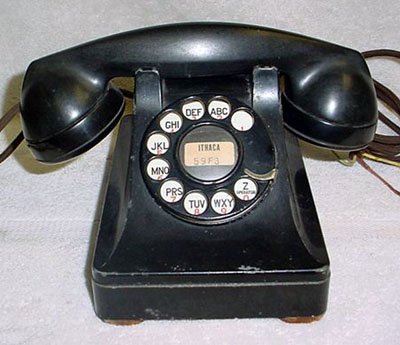 |
D-97464 II 36 |
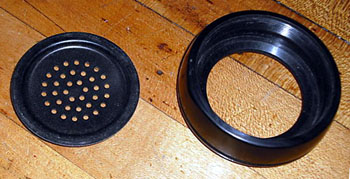 |
D-97730 Handset Has metal threads for the handset caps, similar to the E handset. The handle is seamless. The 2-piece transmitter cap uses the same fiber screen used in the E handset. Note that the Northern Electric NF handset also uses a similar 2-piece transmitter cap. http://www.paul-f.com/neUNI.html (scroll down) |
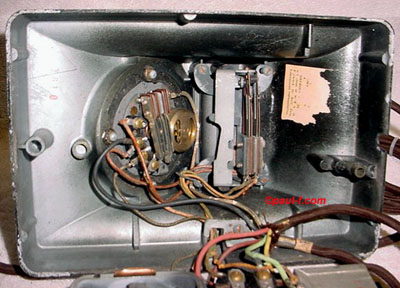 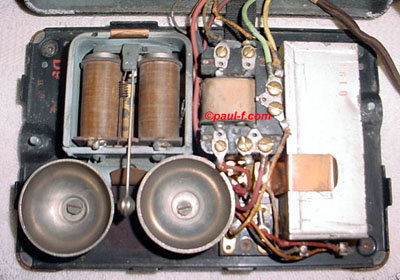 |
Sets with bakelite and metal housings use the
same model number. The internal components are the same, as expected. |
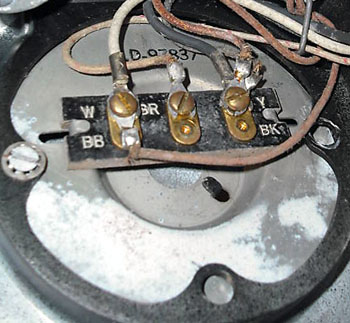 |
Here is the back of an apparatus blank in a manual
(non-dial) metal set, showing the need for a terminal
strip, as used in the production model. |
| Continue
to
the Rotary Set Development
Timelines. |
|

|
©2002-16 paulf. All rights
reserved.
|